
The Neolithic, the final division of the Stone Age, began about 12,000 years ago when the first developments of farming appeared in the Epipalaeolithic Near East, and later in other parts of the world. The Neolithic division lasted until the transitional period of the Chalcolithic from about 6,500 years ago, marked by the development of metallurgy, leading up to the Bronze Age and Iron Age. In other places the Neolithic lasted longer. In Northern Europe, the Neolithic lasted until about 1700 BC, while in China it extended until 1200 BC. Other parts of the world remained broadly in the Neolithic stage of development until European contact.
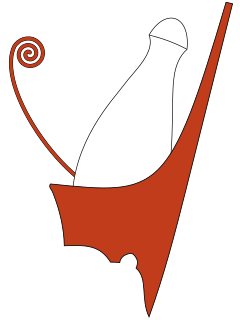
Pharaoh is the common title now used for the monarchs of ancient Egypt from the First Dynasty until the annexation of Egypt by the Roman Empire in 30 BCE, although the term "pharaoh" was not used contemporaneously for a ruler until Merneptah, c. 1210 BCE, during the Nineteenth dynasty, "king" being the term used most frequently until the middle of the Eighteenth Dynasty. In the early dynasties, ancient Egyptian kings used to have up to three titles: the Horus, the Sedge and Bee (nswt-bjtj), and the Two Ladies or Nebty (nbtj) name. The Golden Horus as well as the nomen and prenomen titles were added later.
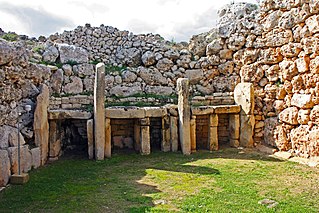
The Stone Age was a broad prehistoric period during which stone was widely used to make tools with an edge, a point, or a percussion surface. The period lasted for roughly 3.4 million years, and ended between 8700 BCE and 2000 BCE, with the advent of metalworking. Though some simple metalworking of malleable metals, particularly the use of gold and copper for purposes of ornamentation, was known in the Stone Age, it is the melting and smelting of copper that marks the end of the Stone Age. In western Asia this occurred by about 3000 BCE, when bronze became widespread. The term Bronze Age is used to describe the period that followed the Stone Age, as well as to describe cultures that had developed techniques and technologies for working copper into tools, supplanting stone in many uses.

In its primitive form, a wheel is a circular block of a hard and durable material at whose center has been bored a hole through which is placed an axle bearing about which the wheel rotates when torque is applied to the wheel about its axis. The wheel and axle assembly can be considered one of the six simple machines. When placed vertically under a load-bearing platform or case, the wheel turning on the horizontal axle makes it possible to transport heavy loads. This arrangement is the main topic of this article, but there are many other applications of a wheel addressed in the corresponding articles: when placed horizontally, the wheel turning on its vertical axle provides the spinning motion used to shape materials ; when mounted on a column connected to a rudder or to the steering mechanism of a wheeled vehicle, it can be used to control the direction of a vessel or vehicle ; when connected to a crank or engine, a wheel can store, release, or transmit energy. A wheel and axle with force applied to create torque at one radius can translate this to a different force at a different radius, also with a different linear velocity.

Amaterasu, also known as Amaterasu-Ōmikami or Ōhirume-no-Muchi-no-Kami (大日孁貴神) among other names, is the goddess of the sun in Japanese mythology. One of the major deities (kami) of Shinto, she is also portrayed in Japan's earliest literary texts, the Kojiki and the Nihon Shoki, as the ruler of the heavenly realm Takamagahara and the mythical ancestress of the Japanese imperial house via her grandson Ninigi. Along with her siblings, the moon deity Tsukuyomi and the impetuous storm god Susanoo, she is considered to be one of the "Three Precious Children", the three most important offspring of the creator god Izanagi.

Wulfhere or Wulfar was King of Mercia from 658 until 675 AD. He was the first Christian king of all of Mercia, though it is not known when or how he converted from Anglo-Saxon paganism. His accession marked the end of Oswiu of Northumbria's overlordship of southern England, and Wulfhere extended his influence over much of that region. His campaigns against the West Saxons led to Mercian control of much of the Thames valley. He conquered the Isle of Wight and the Meon valley and gave them to King Æthelwealh of the South Saxons. He also had influence in Surrey, Essex, and Kent. He married Eormenhild, the daughter of King Eorcenberht of Kent.
Gifhorn is a district in Lower Saxony, Germany.
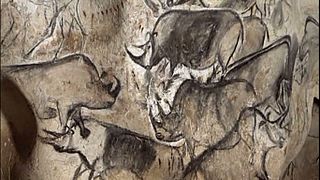
In the history of art, prehistoric art is all art produced in preliterate, prehistorical cultures beginning somewhere in very late geological history, and generally continuing until that culture either develops writing or other methods of record-keeping, or makes significant contact with another culture that has, and that makes some record of major historical events. At this point ancient art begins, for the older literate cultures. The end-date for what is covered by the term thus varies greatly between different parts of the world.

The history of writing traces the development of expressing language by letters or other marks and also the studies and descriptions of these developments.

Boldecker Land is a municipality in the district of Gifhorn, in Lower Saxony, Germany. It is situated along the river Aller, approx. 12 km east of Gifhorn, and 8 km northwest of Wolfsburg. Its seat is in the village Weyhausen.

Lutter is a small river in the Lüneburg Heath, Lower Saxony, Germany, right tributary of the Lachte.

Islamic holy books are the texts which Muslims believe were authored by God through various prophets throughout humanity's history. All these books, in Muslim belief, promulgated the code and laws that God ordained for those people.
This timeline of human prehistory comprises the time from the first appearance of Homo sapiens in Africa 315,000 years ago to the invention of writing and the beginning of history, 5,000 years ago. It thus covers the time from the Middle Paleolithic to the very beginnings of world history.

The Barnbruch is a wetland of international importance in the old glacial valley of the river Aller that provides a habitat for endangered species of birds, amphibians and insects. It lies between the city of Wolfsburg and town of Gifhorn and consists of an enclosed woodland area of around 1,500 hectares with surrounding meadows and pastures. This low-lying depression lies partly within the territory of the city of Wolfsburg and partly within Gifhorn district. Together with the Drömling around 15 km to the east, the Barnbruch is the most valuable ecological lowland region along the upper course of the Aller.
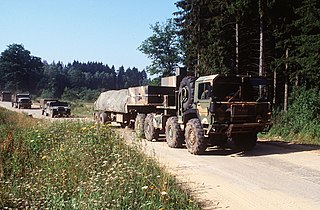
The MAN KAT1 is a family of high-mobility off-road trucks developed by MAN SE for the German army.

The NAF Neunkirchener Achsenfabrik AG is a family run company in Neunkirchen am Brand, Bavaria, Germany. NAF manufactures axles and transfer cases for self-propelled applications for construction, forestry and agriculture machinery. NAF is the market leader for powered bogie axles.
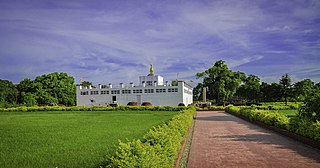
Maya Devi Temple is an ancient Buddhist temple situated at the UNESCO World Heritage Site of Lumbini, Nepal. It is the main temple at Lumbini, a site traditionally considered the birthplace of Gautama Buddha. The temple stands adjacent to a sacred pool and a sacred garden. The archaeological remains at the site were previously dated to the third-century BCE brick buildings constructed by Ashoka. A sixth-century BCE timber shrine was discovered in 2013.
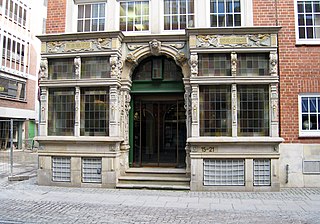
The Essighaus was an impressive gabled town house in the old town of Bremen in northern Germany. One of the city's finest examples of Renaissance architecture, it was almost completely destroyed by bombing in 1943. The entrance flanked by projecting bay windows is the only part of the building which has been restored.

The Langenstraße is a historical street in the old town of Bremen in the north of Germany. First mentioned in 1234, it is one of Bremen's oldest streets and one of the most important for the city's merchants. It no doubt originated at the time when the first settlements grew up on the north bank of the Balge. It runs west from the Marktplatz parallel to the River Weser over Bürgermeister-Smidt-Straße to Geeren. Many of the street's historic buildings were seriously damaged during aerial bombings in the Second World War but were carefully reconstructed in the postwar period.

The Atlas GmbH is a medium-sized construction machinery manufacturer based in Ganderkesee. The company mainly manufactures wheeled excavators, two-way excavators and crawler excavators in various weight and performance categories, as well as loading cranes and medium-sized wheel loaders.
























